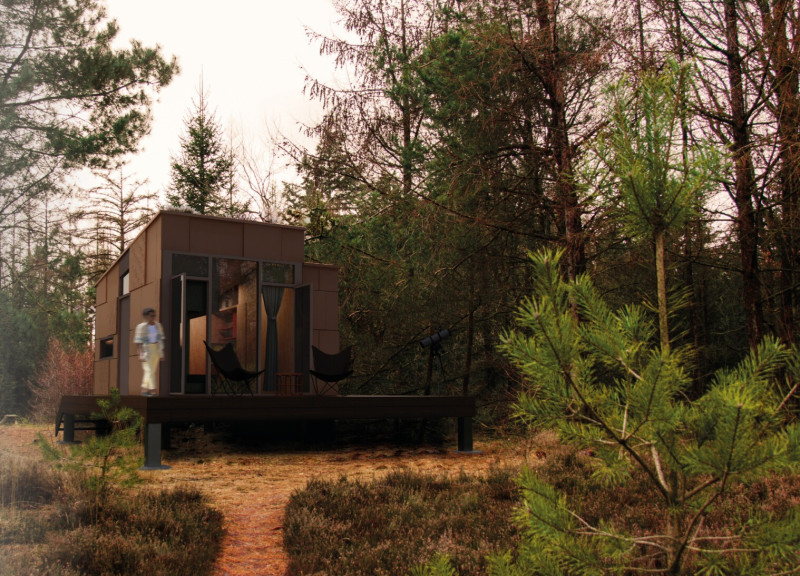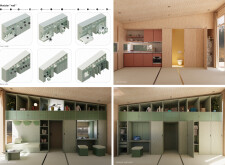5 key facts about this project
### Project Overview
Located within an urban context that caters to the growing needs of remote workers, the microhome design emphasizes minimalism, sustainability, and adaptability. Occupying 25 square meters, the structure serves as a multifunctional space supporting both living and working activities. The intent is to cultivate a harmonious relationship between occupants and their environment, focusing on ecological responsibility while accommodating the diverse lifestyles of modern users.
### Spatial Flexibility
The microhome’s interior layout is strategically divided into zones that facilitate various modes of living, including personal leisure, shared activities, and work-related functions. This spatial strategy allows occupants to transition smoothly between different uses throughout the day. Dedicated areas for essential services—kitchen, bathroom, and laundry—are incorporated without sacrificing privacy, aligning with the preferences of young professionals seeking efficient and multifunctional living solutions. The design illustrates the versatility of the space through distinct living scenarios such as meal preparation, work tasks, and relaxation, showcasing its adaptability to users' changing needs.
### Material Sustainability
The selection of materials prioritizes both sustainability and aesthetic cohesion. Key components include Kingspan Quadcore Carrier for thermal insulation and structural integrity, Troditek Acoustic Ceiling Tile to improve acoustics, and a Slim-line Rainwater Harvesting Tank for water reuse. Additionally, the Drif-Design Cassette System enhances architectural flexibility while promoting visual continuity, and the Logi Bearing Structure provides a robust framework. These materials have been chosen for their environmental benefits as well as their capacity to create a coherent living environment that meets contemporary functional and aesthetic standards.
The design strategy further emphasizes natural light through the inclusion of large windows, drawing in outdoor vistas and reinforcing a connection to the surrounding environment. Sliding doors, green roofs, and the integration of renewable energy sources, such as solar panels, reflect a commitment to minimizing the ecological footprint while enhancing user experience.






















































